Stimulants are drugs that increase your heart rate, breathing rate, and brain function.
The United States Drug Enforcement Administration (DEA) has stimulant drugs labeled as a Schedule II class of drug. These prescription drugs can be highly addictive and dangerous, especially if misused.
Some stimulants only affect one organ or system in your body, such as your nervous system.
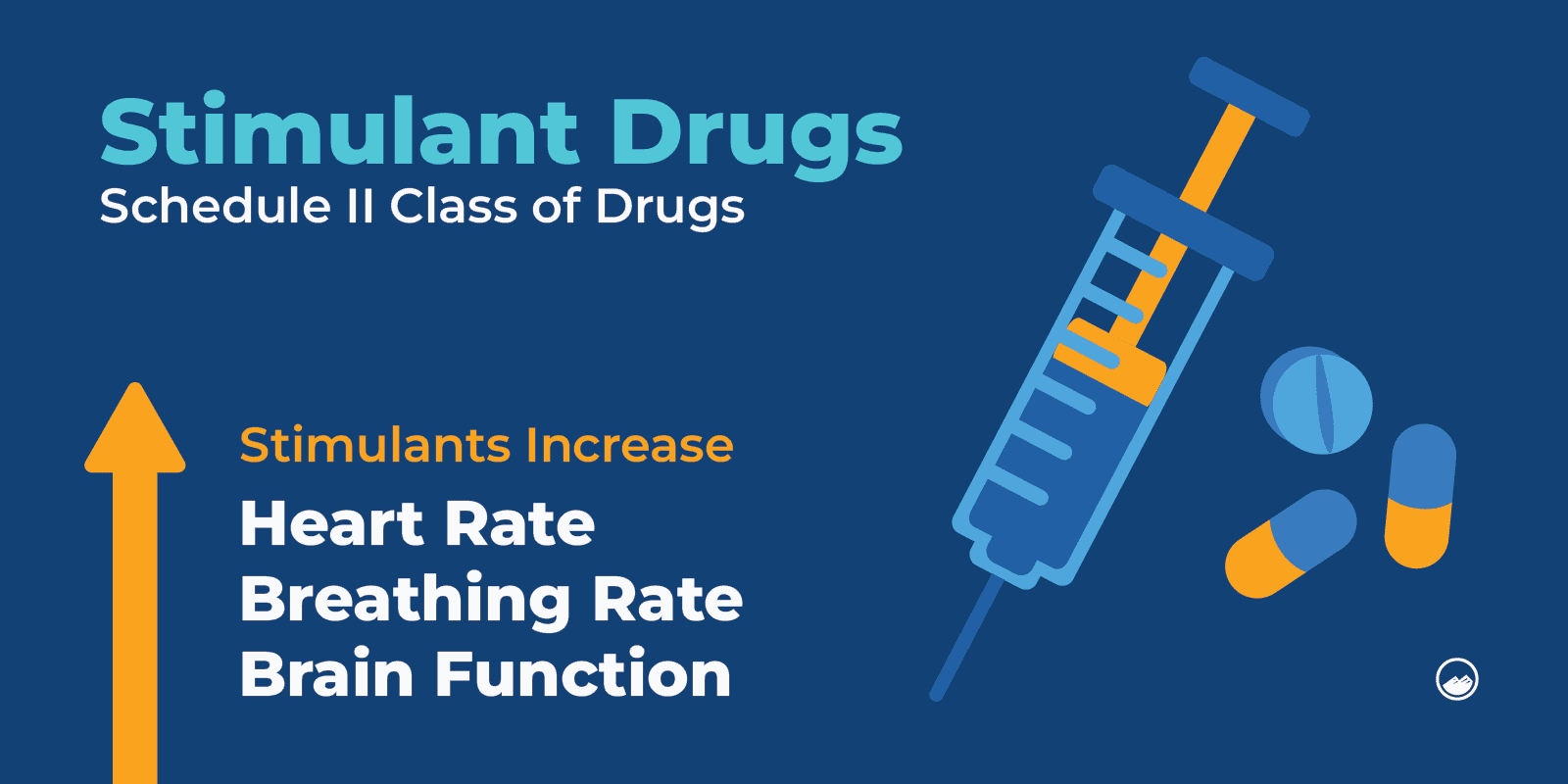
Stimulants activate a particular part of the body or nervous system. Providers commonly use prescription stimulants to treat attention-deficit/hyperactivity disorder (ADHD), narcolepsy, or obesity.
Amphetamines and Methylphenidate are the two main groups of stimulants.
Some stimulant drugs are legal and often prescribed to treat conditions like ADHD, narcolepsy, or obesity. The most common prescription stimulant drugs are:
Some stimulants are found in over-the-counter and everyday substances, such as:
Other stimulant drugs are illegal and dangerous, especially when misused and combined with other substances. These illegal stimulant drugs include:
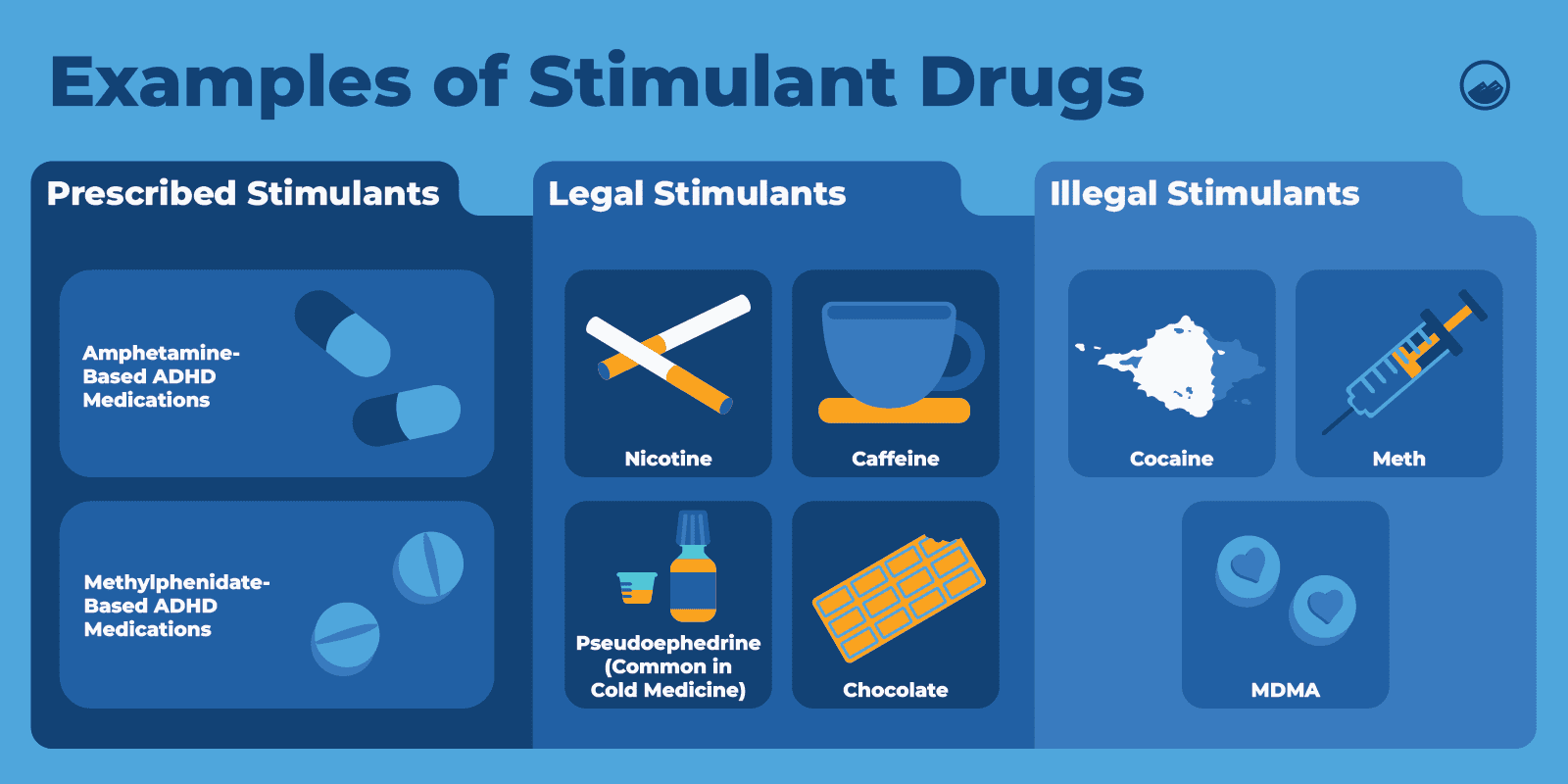
The DEA describes that stimulants can be referred to by many street names, such as:
Prescription stimulants are typically in the form of tablets, capsules, or liquids. When used illegally, stimulants are often injected in liquid form or snorted in powder form.
When someone is injecting stimulants, they may be left with bruising or track marks.
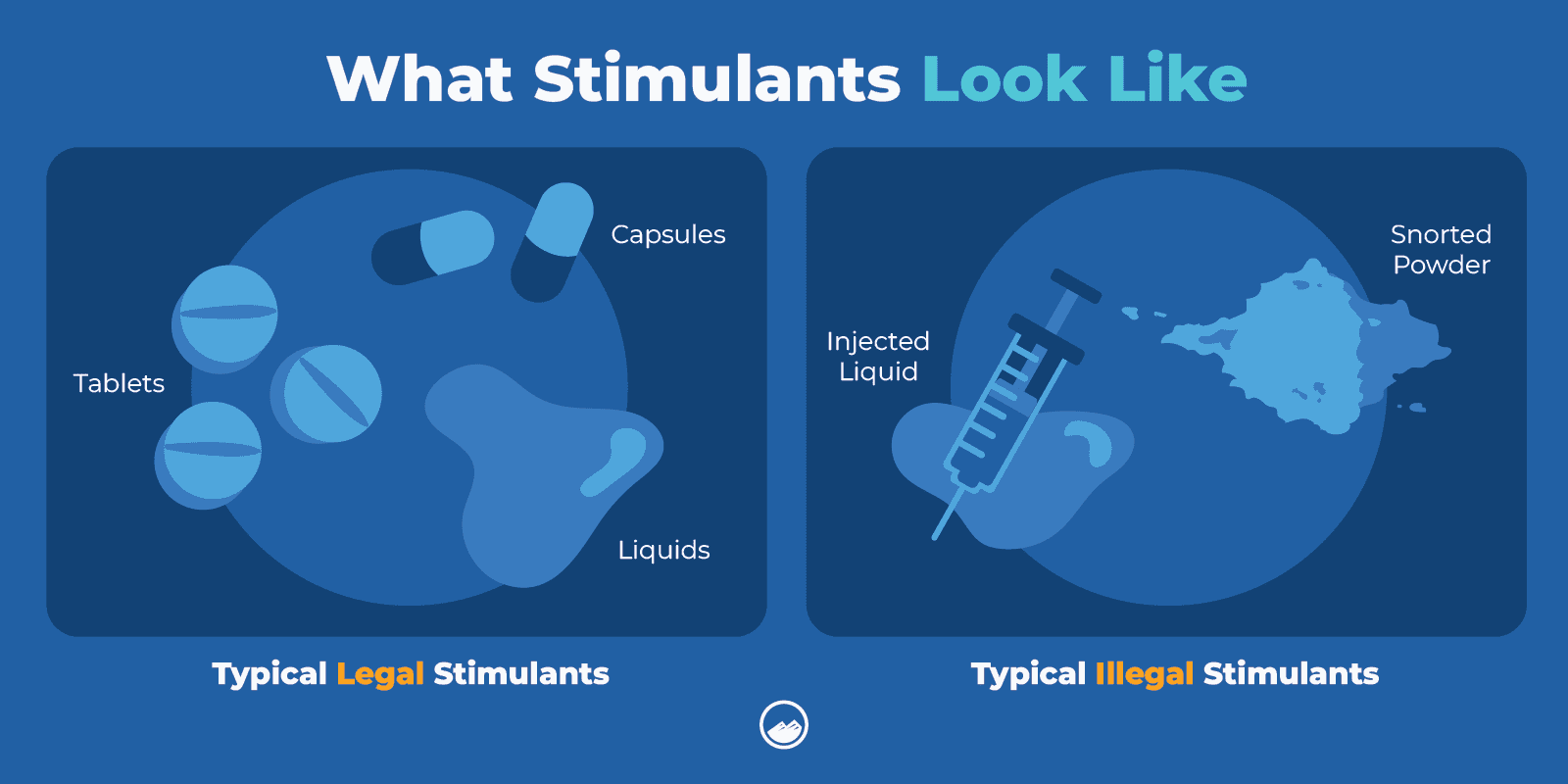
Stimulants can be taken orally, snorted, injected, inhaled, or smoked. How quickly they are absorbed into the body depends on how they are administered.
Drugs that are inhaled or injected typically get into the bloodstream quicker than drugs that are swallowed.
The two main categories of central nervous system (CNS) stimulants are:
There are also eight classes of (CNS) stimulants, which refer to the eight different chemical compounds that make up the drugs. They include:
Caffeine is the most popular stimulant. It is easily accessible to anyone at any time or age and is heavily ingrained in American culture.
Some people depend on caffeine to stay awake throughout the day; others use it as a diet aid.
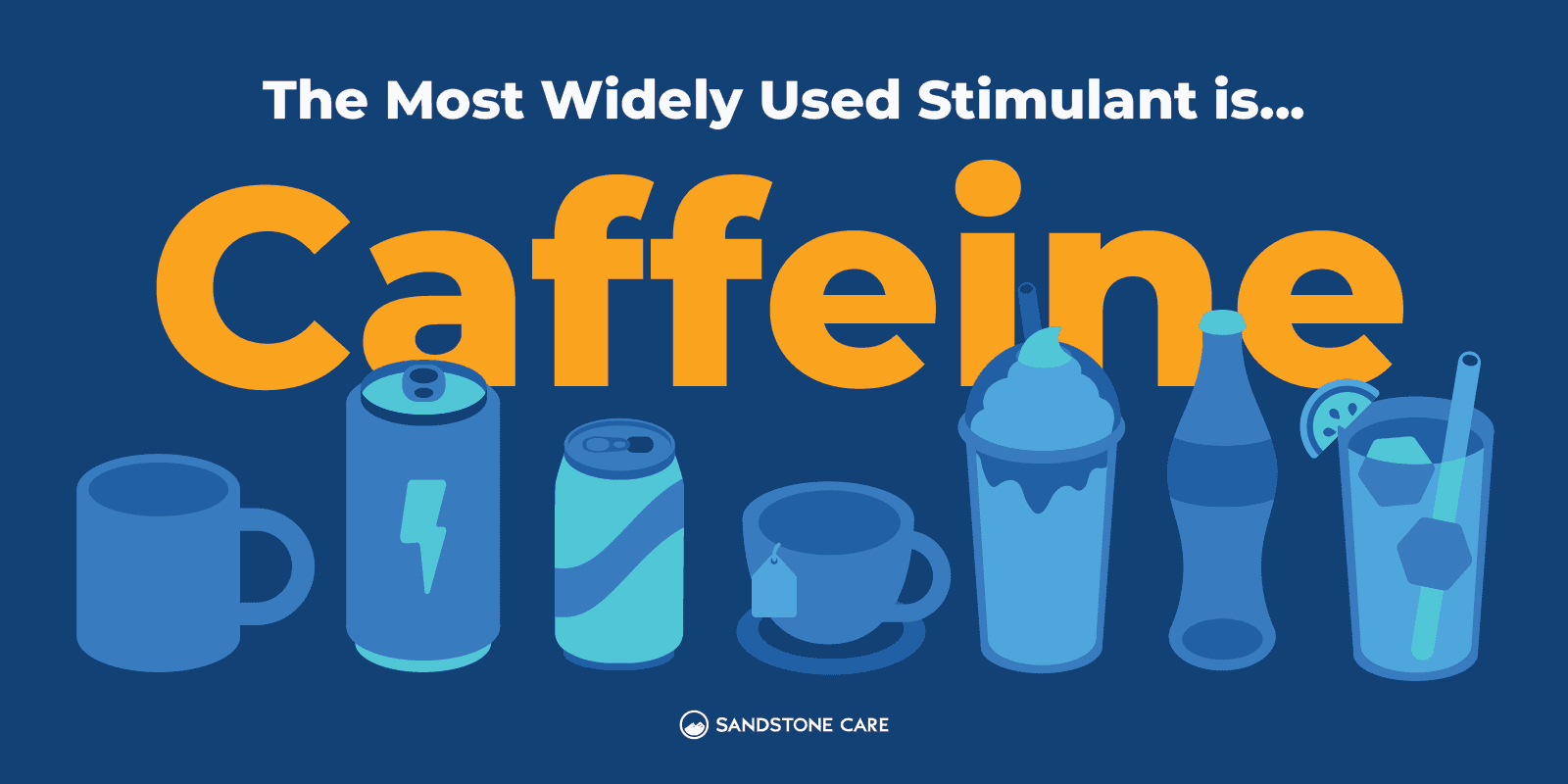
According to NIDA, “Historically, stimulants were used to treat asthma and other respiratory problems, obesity, neurological disorders, and a variety of other ailments.”
Stimulants were also used to treat hyperactivity in children, as well as depression, before modern-day antidepressants were developed.
Stimulants were originally used for various respiratory and mental health conditions and even as a diet treatment!
The Substance Abuse and Mental Health Services Administration (SAMHSA) lists the following as prescription medications:
Prescription stimulants are often used to treat conditions such as ADHD, narcolepsy, and obesity. Some stimulants, such as Numbrino and Goprelto, are used as prescription anesthetics.
Some stimulants are legal if prescribed by a licensed provider and used to treat specific conditions. Certain forms of the drugs become illegal when they are used recreationally in doses that have not been prescribed to treat a specific condition.
People take stimulants for different reasons. Some are taken for medical use, to focus attention, control weight, or stay awake. Others use stimulant drugs recreationally to fit in, relax, enhance performance, or get high.
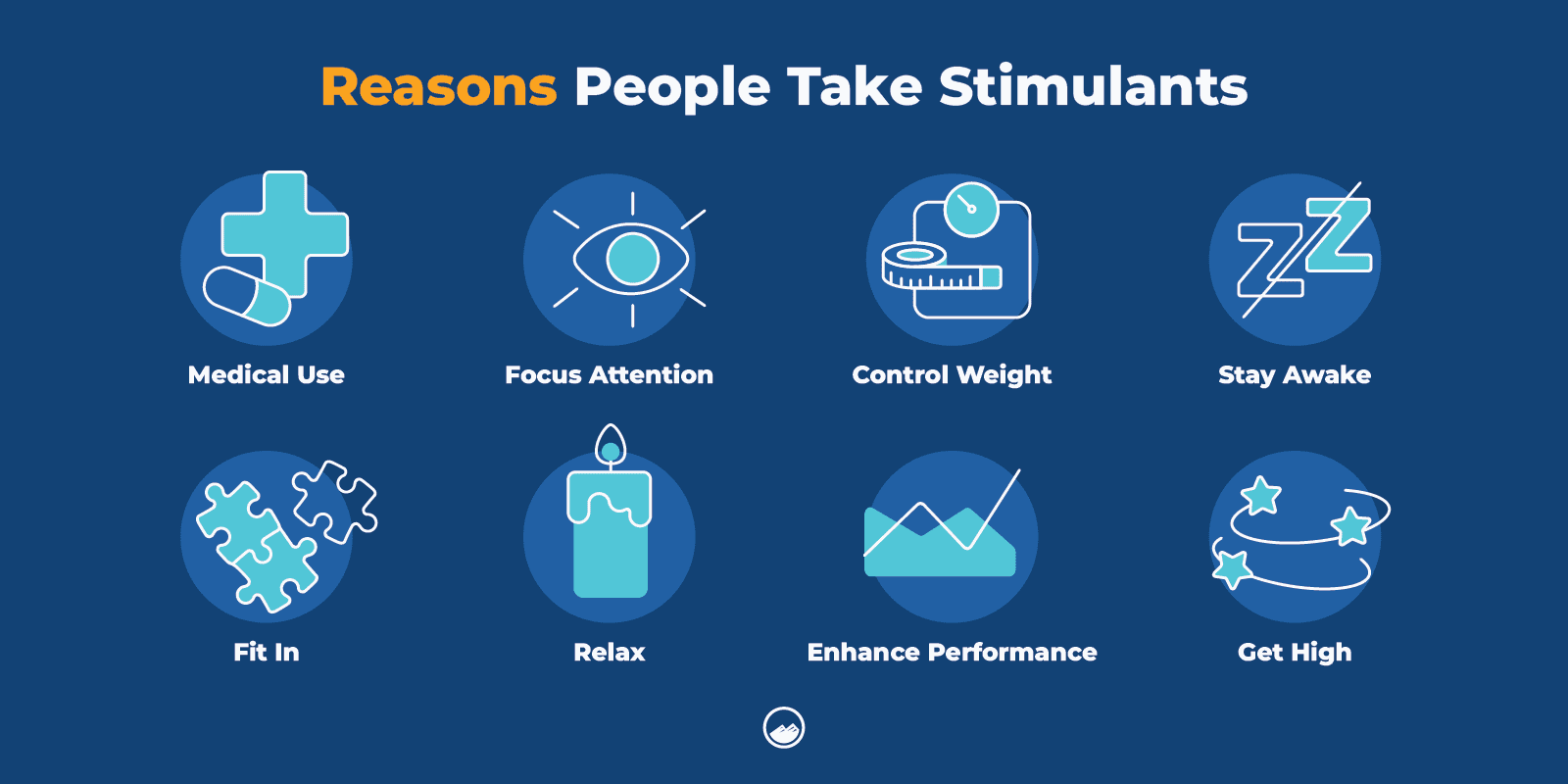
SAMHSA lists the following as illegal or illicit stimulants, including:
The effects of stimulants vary from person to person and depend on how the drug(s) enter the bloodstream, the drug’s purity, and the drug’s potency.
When used for medical purposes, such as to treat conditions like ADHD, prescription stimulants can help the brain focus and hold attention for longer periods than it could without the stimulants. Prescription stimulants can also help people control their weight and stay awake.
It’s important to note that if stimulants are mixed with other substances, such as Adderall and alcohol, they can produce different effects.
The United States Drug Enforcement Administration (DEA) states, “When used as drugs of abuse and not under a doctor’s supervision, stimulants are frequently taken to:
The most common side effects of stimulants are increased alertness and heart rate. Overusing stimulants can eventually cause serious issues such as heart failure.
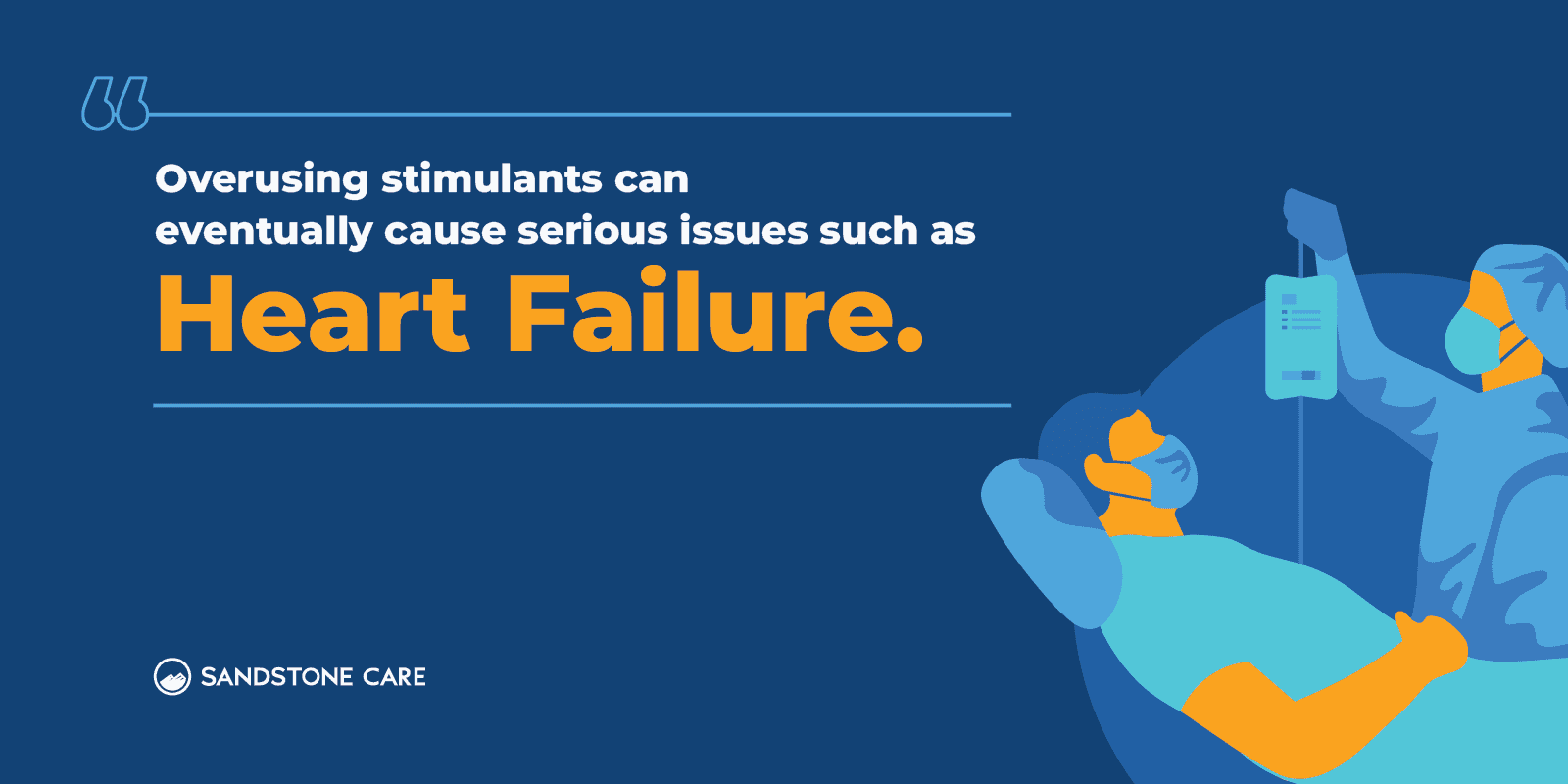
The National Institute on Drug Abuse (NIDA) explains the short-term side effects of stimulants might include:
The long-term side effects of stimulants can include:
Only take stimulants if a licensed provider prescribes them for a specific medical condition. Even then, follow the provider’s instructions carefully and report any concerning side effects.
It’s also important to notify your doctor of any other medical conditions or medicines you are taking. Stimulants can interact with other medications, even ones that can be purchased over the counter, making them ineffective or dangerous when combined.

Stimulant use can permanently alter how the brain functions, affecting memory, sleep patterns, and mental and physical health.
Stimulants increase the levels of the chemicals dopamine and norepinephrine in the brain. Norepinephrine impacts blood vessels, blood pressure, heart rate, blood sugar, and breathing. Stimulants can even cause psychosis and hallucinations.
Stimulant dependence occurs when a person depends on the stimulant to function in their everyday life. This may include school, social interactions, work, etc. When the user develops a “need” or craving for the stimulant, it’s a problem.
Yes, stimulant medication can become addictive. That is why following the provider’s exact instructions and dosages is essential. When used improperly, stimulant medications can result in dangerous side effects, addiction, or death.
Stimulant abuse disorder occurs when the user continues to use stimulants, regardless of how adverse the effects are to their work, school, relationships, or health.
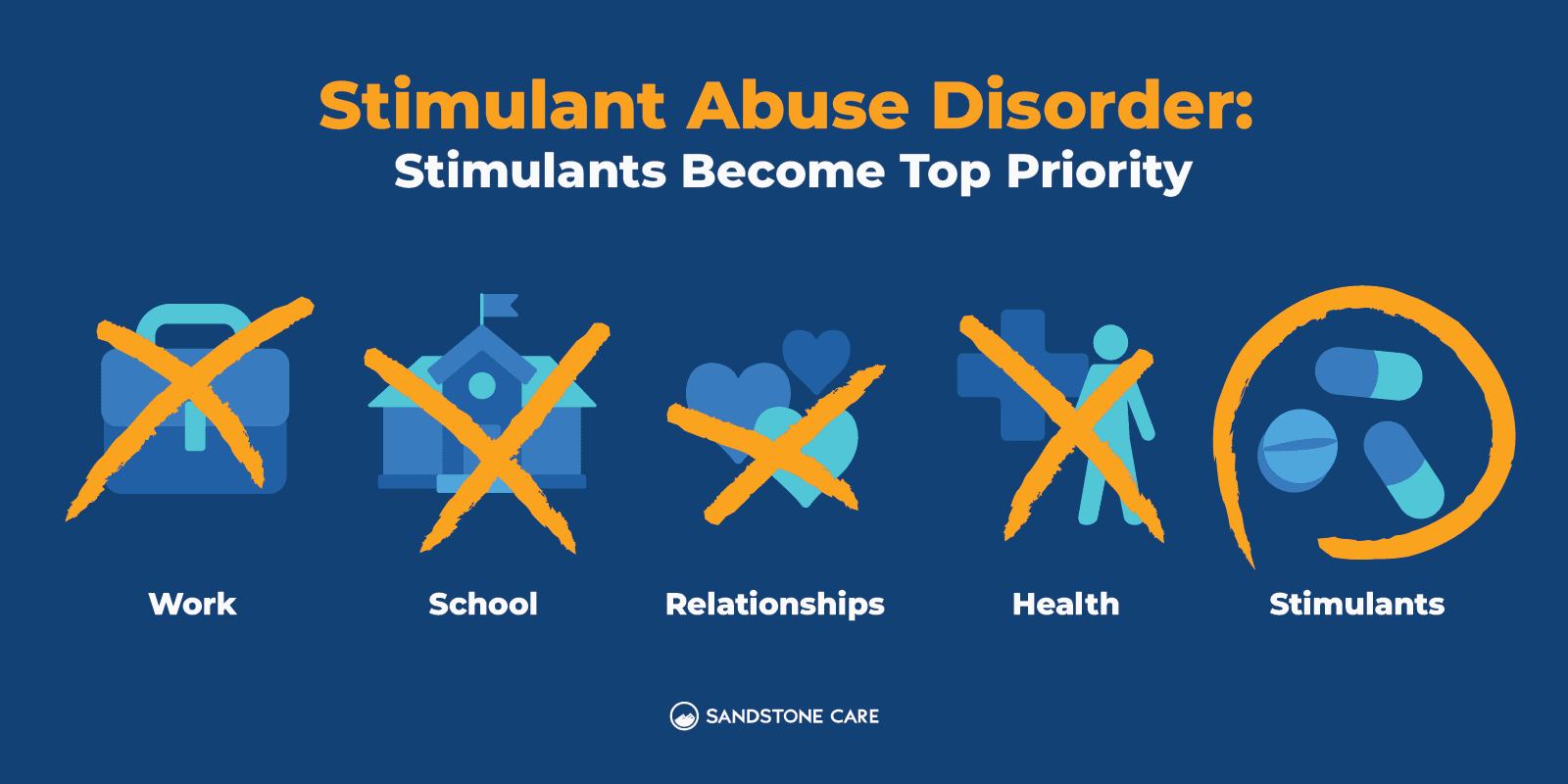
The DSM-V puts the symptoms of stimulant withdrawal into the following categories:
Users may experience withdrawal symptoms, depending on the amount of drug they’ve used and how long they’ve been using it.
MedlinePlus explains the following symptoms are signs of stimulant withdrawal:
There is debate about whether or not stimulants should be tapered off.
Some say that since many stimulants move so quickly through the body, it’s not necessary to taper off.
Others argue that tapering off, especially for those who have become dependent on stimulants, is necessary to reduce withdrawal symptoms.
Stimulant overdose can quickly become a life-threatening situation. Since stimulants can rapidly increase heart rate and body temperature, they can result in seizures, hyperthermia, stroke, heart attack, or death.
The most important thing to do if you or someone you know is experiencing a stimulant overdose is to call 911 immediately. Emergency services have specific medications they can administer that may slow down the effects of stimulants and, ultimately, save someone’s life.
The Centers for Disease Control and Prevention (CDC) reports that the following symptoms are life-threatening and require immediate medical assistance from emergency services:
People who overdose on stimulants without medical help may experience high fever, seizures, and heart problems before dying. This risk is higher when stimulants are used alongside physical activity.
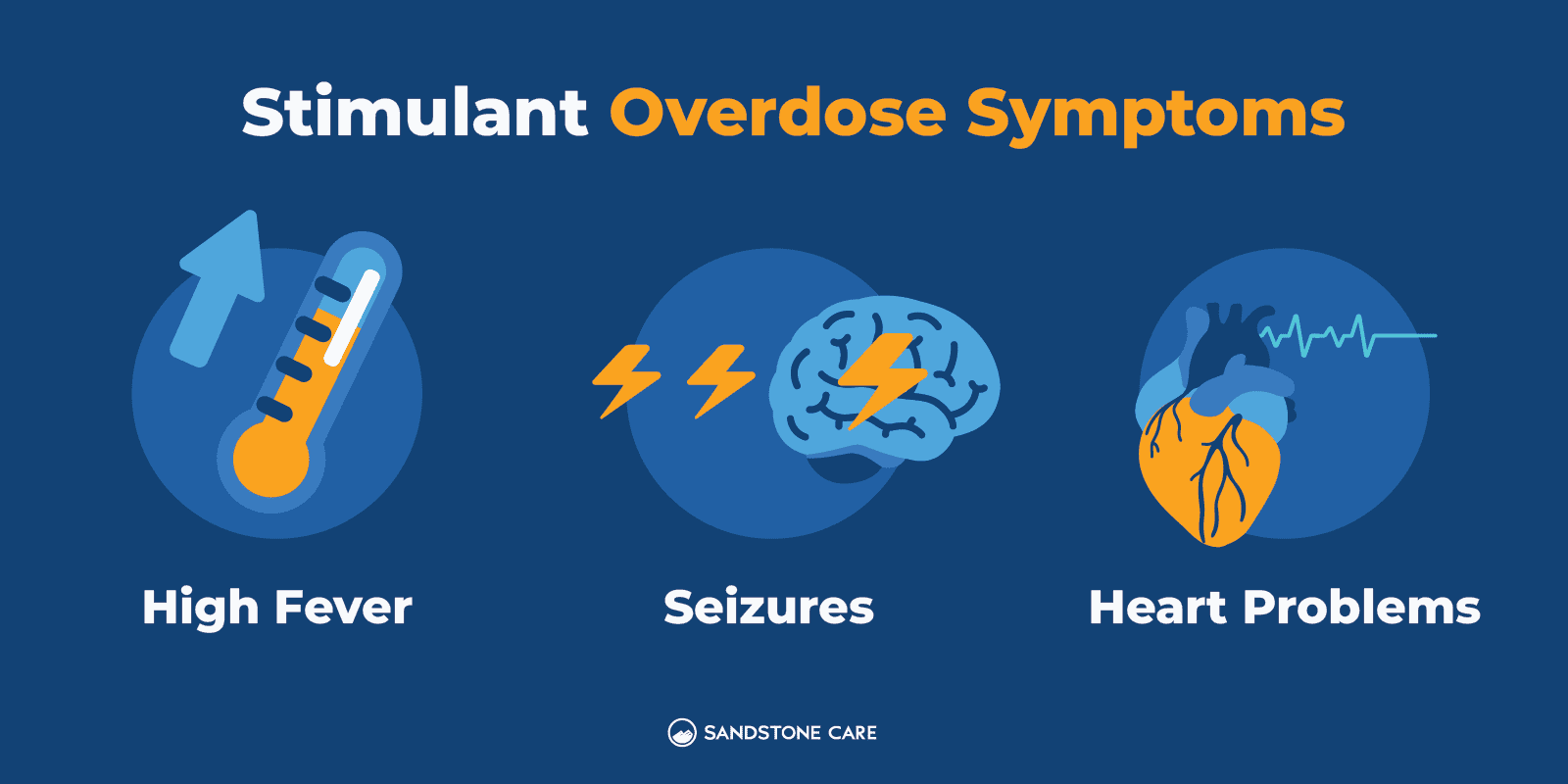
The type of treatment for teens will depend on the severity of their substance use and the treatment center’s access to resources.
Some treatment centers only provide outpatient treatment for adolescents, which may include partial hospitalization programs (PHP) or intensive outpatient programs (IOP). Typically, clinicians want to keep adolescents’ lives as stable and consistent as possible, especially if they have a healthy support system at home. Attending outpatient treatment can allow the patients to still attend school and treatment simultaneously.
The effectiveness of treatment for any substance use disorder will greatly vary based on the individual. Factors such as medical history, mental state, genetics, and co-occurring disorders can all influence how effective treatment is.
The most common forms of treatment for stimulant addiction include:
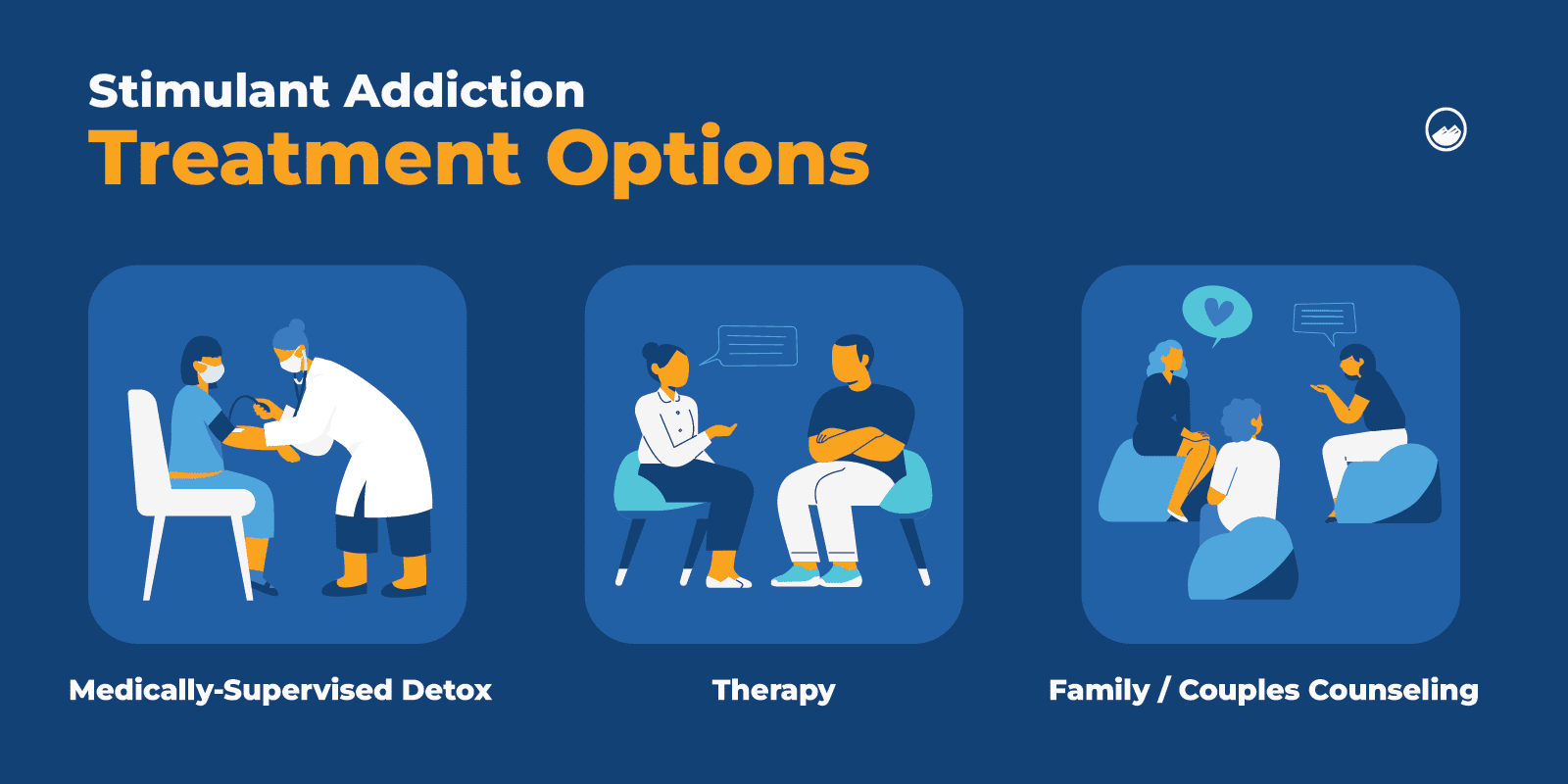
The type of treatment offered will vary based on the treatment center’s resources and the clinicians’ expertise.
Some treatment centers offer residential treatment, in which the patient lives on campus while they attend extensive, daily treatment. The duration of the stay will depend on the types of substances used and the duration of substance use.
When determining if residential treatment is right for the patient, the treatment center will also evaluate the patient’s access to food, shelter, transportation, employment, and healthy relationships.
Additionally, some treatment centers provide specialty residential treatment programs for people who cannot take significant time off work to attend treatment. This may allow the patient to continue working their job remotely while attending intensive treatment on campus.
Depending on the available resources, treatment centers may offer various outpatient programs. Outpatient programs allow the patient to attend treatment and still live at home. This type of treatment may be chosen if the patient is a caretaker, has a healthy support system, and has access to reliable transportation.
Some treatment centers offer partial-hospitalization programs (PHP) or intensive outpatient programs (IOP), in which the patient still receives daily intensive therapy but doesn’t have to live on campus.


At Sandstone Care, we understand the challenges of overcoming stimulant use. We provide personalized treatment and evidence-based techniques for teens and families seeking healing. Whether it’s addiction or a mental health issue, we’re here to help with dignity and respect.